Seat Care
Like most things, if the fabric on your furniture is to look good and last for years it needs looking after. Following the advice in this care guide will help your upholstery retain its new appearance for much longer and its lifetime will be extended.
 |
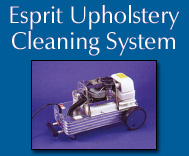 The most exciting
The most exciting
advancement in
cleaning technology!
The Esprit Upholstery
Cleaning System
now available from BusTex™.

|
The Nature of Soiling
Neglect is the most common cause of the premature breakdown
of any upholstery fabrics. This is shown in the photo illustrations
and is an indication of what proper care maintenance seeks
to avoid. The problems illustrated have occurred as a result
of inadequate removal of dirt, dust and grit which settles
on the surface of the upholstery. If not removed, the dirt
and grit will eventually penetrate the structure of the fabric.
With further agitation, as a user sits on the upholstery,
the abradants will work like sandpaper wearing away and breaking
fibres in the fabric structure. If enough fibres are broken
a hole will eventually form in the upholstery.
In the same way, pilling can occur. Pilling involves loose
fibres
migrating to the surface of the fabric which , with further
agitation as a user sits on the chair, will curl up to form
tiny bobbles of fibre. Although pilling can occur with well
maintained fabrics, it is well known that soiling agents can
initiate and/or significantly accelerate pilling. Finally,
any liquid spills which result in a ‘wetting’
of the upholstery, if left in situ, can form a syrup like
substance with dirt and grits. This can develop into a brittle
layer resulting in a hardening of fibres and aggravating the
problems outlined above.
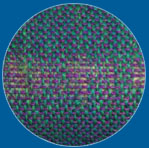
An upholstery fabric which has
‘abraded’.
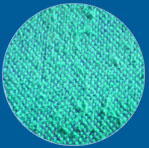
An upholstery fabric which has
‘pilled’.
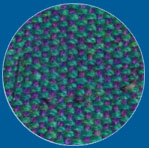
An upholstery fabric which has
been stained.
::
back to top
::
1. Vacuuming
To prevent dirt, dust and grit from penetrating the fabric
structure, it is necessary to vacuum upholstery on a regular
basis. For the best results, in particular in high risk areas
(such as nursing homes, wine bars, pubs and clubs, etc) and
high usage areas (such as airport lounges and public spaces,
etc) weekly vacuuming is highly recommended.
2. Dry Cleaning
Periodically deeper cleaning may be required. Annual or bi-annual
cleaning will preserve and enhance wool upholstery. More regular
cleaning may be required in high risk areas.
It is strongly advised that professional cleaning services
are used to deep clean upholstery fabrics. Upholstery fabrics
containing wool must be dry cleaned only. Aqueous cleaning
of wool orwool rich upholstery fabrics is not advised. If
wool is over wetted, shrinkage and hence undesirable dimensional
and appearance changes may occur as a result. The upholstery
will be permanently damaged. NEVER over wet wool or wool rich
upholstery. Also never apply bleach, ammonia, alkali or strong
acids to wool upholstery.
::
back to top
::
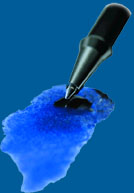
Some Facts about Dry Cleaning:
Everyone is familiar with aqueous cleaning techniques. Dry
cleaning is less understood. Dry cleaning involves the use
of organic solvents to remove dirt, grits, stains and other
soiling agents from fabric. It is called dry cleaning because
very little or no water is used in the process. This makes
dry cleaning particularly suitable for wool and wool rich
upholstery fabrics which may be adversely affected when ‘wetted
out’.
CARE INSTRUCTIONS FOR WOOL AND
WOOL BLEND UPHOLSTERY
Dry cleaning will not cause physical weakening of
textile fibres. Dry cleaning is not able to remove years of
ingrained dirt and other soiling agents. It is better to avoid
ingrained soiling by regular preventive care/cleaning.
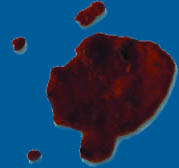
Spot and Stain Removal Guide:
Please refer to the separate section at the back of this care
guide.
CARING FOR FABRIC WITH FIRE RETARDANT
TREATMENT
1. Camreflam®
Upholstery fabrics, both wool and synthetic, which have received
Camreflam FR treatments should be vacuumed only. Camreflam
FR treatment is water soluble and hence an aqueous cleaning
process will reduce or completely remove the FR chemical.
The Camreflam FR treatment is insoluble in dry cleaning solvents,
however the FR may be removed to some extent, depending upon
the amount of water in the systems and the degree of mechanical
action. It is therefore recommended that dry cleaning is also
avoided.
2. Zirpro®
Zirpro FR treatment applies to wool upholstery only. Such
fabrics can be dry cleaned with satisfaction, as Zirpro treatment
is permanent and cannot be removed.
ANTI STAIN TREATMENTS
Anti-stain treatments can be applied to wool or synthetic
fabrics to enhance their stain resistant properties. They
work by forming an invisible protective shield around each
individual fibre in the fabric structure. The shield lowers
the surface energy of the fibres so they don’t attract
dry soiling agents or soak up wet stains. Anti-stain treatments
protect against most oil and water based stains which can
simply be blotted then wiped away.The treatment will provide
significant added protection to your upholstery, allowing
it to look good and last longer. It is particularly recommended
to use such treatments in high risk areas such as nursing
homes, wine bars and airport lounges. Anti-stain treatments
must be specified at the order stage and cannot be added after.
Care of Upholstery with Anti-stain Treatments for deeper cleaning
treated upholstery can be dry cleaned without any adverse
reaction.
::
back to top
::
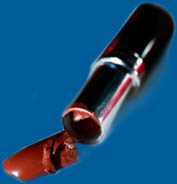
CARE INSTRUCTIONS FOR SYNTHETIC UPHOLSTERY
1. Vacuuming
Regular vacuuming is recommended to prevent dirt, dust and
grit from penetrating the fabric structure. For the best results
in particular in high risk areas (such as nursing homes, wine
bars, pubs and clubs, etc) and high usage areas (such as airport
lounges and public spaces, etc) weekly vacuuming is highly
recommended.
2. Deeper Cleaning
Periodically deeper cleaning may be required. Annual or bi-annual
cleaning will preserve and enhance upholstery. More regular
cleaning may be required in high risk areas.
It is strongly advised that professional cleaning services
are used to deep clean upholstery fabrics.
2.1 Aqueous Cleaning Techniques
- Wipe clean with a damp cloth
Upholstery fabrics containing 100% synthetic fibres such as
Polyester, Polyacrylic and Polypropylene are not adversely
affected by aqueous cleaning techniques and once surface dirt
and grit has been removed by a vacuum, the fabrics can be
simply wiped with a clean damp cloth.
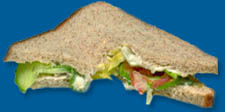
- Machine washing
Polyester and Polyacrylic upholstery fabrics can be machine
washed at temperatures of 40°C - 60°C. Please consult
the back of the pattern card for the correct wash temperature.
When machine washing, use branded upholstery shampoo only.
Never use bleach, ammonia or other cleaning agents which are
not specially designed for the task. Always read labels and
follow instructions as advised on the cleaning solutions.
Following cleaning, if drying techniques are used where high
temperatures are involved contact our technical services department
for advice. Exceeding the temperature limits of the fabrics
will result in permanent damage. Please note: Polypropylene
is not suitable for machine washing. Polypropylene is an inert
fibre and as such is unable to form a chemical bond with any
spillage medium. As such vacuuming, then wiping with a clean
damp cloth will remove most soiling agents.
2.2 Dry Cleaning
Synthetic fabrics respond well to dry cleaning techniques
with the exception of Polypropylene. Due to the high temperatures
involved it is not recommended that Polypropylene is dry cleaned
as this could damage the fabric.
::
back to top
::
Spot and Stain Removal Guide

To treat stains use Step A first; apply
small quantities of liquid, blot well with clean tissues after
each application. Work carefully to release stain from edge
to centre. Allow to dry. If unsuccessful try step B and later
C.
TABLE OF TREATMENTS
1. White Spirit, Turps, or substitute
2. 1,1,1 Trichloroethane (Dry cleaning fluid)
3. Upholstery Detergent or Shampoo at manufacturer’s
recommended dilution
4. Acetone, nail polish remover - non oily
5. Cold water
6. Surgical spirit (alcohol)
7. Borax 2% solution, dissolve 1 teaspoonful in warm water,
top up cup with cold
8. Salt 2% solution, 1 level teaspoon in cup of tepid water
9. Use 3 as above + drop of spirit vinegar
10. Biological detergent 1% solution (1 level tsp in cup of
warm water)
11. Use 6 as above diluted 1:5 water
12. Disinfectant, dilute as recommended on bottle, or 1 tsp
in 2 pints water
13. Use 7 as above + drop of spirit vinegar
14. Chill with ice cubes in plastic bag
15. Hot iron over layers of white tissue
16. Consult a professional cleaner
17. Vacuum thoroughly
FABRIC CARE SYMBOLS
The symbols below are some of the most common which apply
to the care and maintenance of our fabrics. Please consult
the
reverse of our fabric swatchcards for exact details.

::
back to top
::
|

